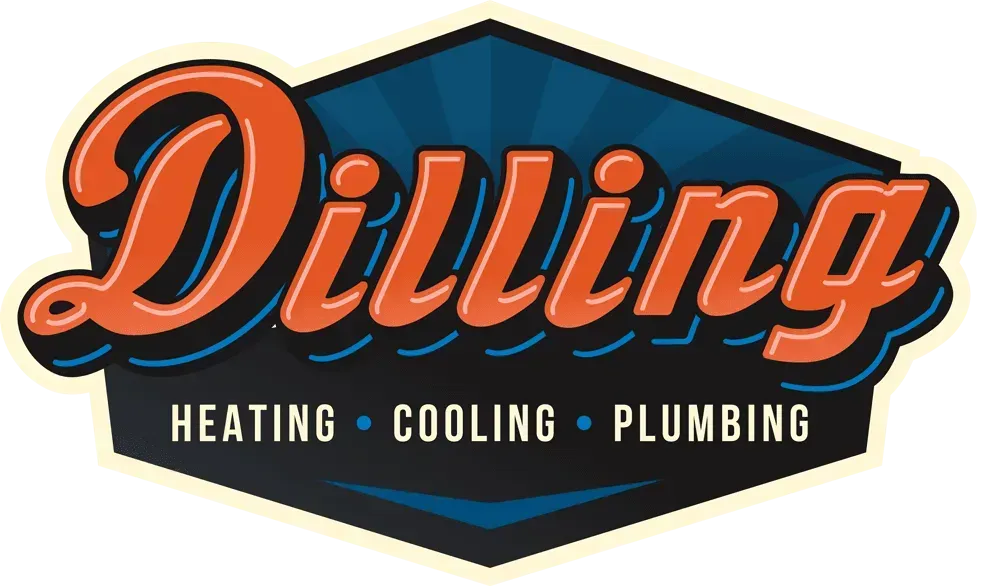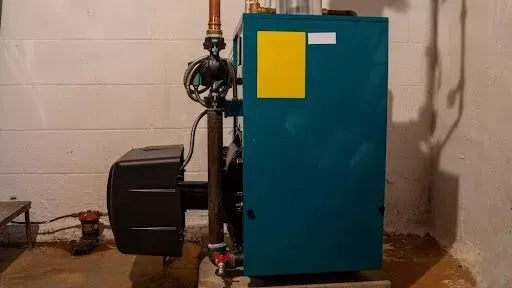
Your heating system works hard to keep your home cozy, but how do you know when it’s time to upgrade? Whether you’ve noticed uneven heating, strange noises, or skyrocketing energy bills, there are clear signs that your existing furnace might be on its last legs.
Let us help you determine if it’s time to replace your old furnace and walk you through everything you need to know about furnace replacement in Philadelphia, PA!
How Long Do Furnaces Typically Last?
The typical lifespan of a furnace is around 15 to 20 years, depending on the type and how well it’s been maintained. Factors like regular tune-ups, usage patterns, and system type (e.g., gas or electric furnace) all impact longevity.
As your furnace ages, it starts losing efficiency and may struggle to distribute heat evenly throughout your home. If your system is approaching or past the 20-year mark, it’s likely time to consider a replacement furnace.
Signs It’s Time to Replace Your Furnace
Your heating system gives off warning signs when it’s on its way out. Keep an eye out for them to save yourself from an unexpected breakdown.
Rising Energy Bills
One of the most common signs that it’s time to replace your old furnace is consistently higher utility bills. As systems age, they become less energy efficient, meaning your current furnace must work harder to keep your home warm, driving up your costs.
Frequent Repairs
If you’re calling for repairs more often than you’d like, it might be time to replace your furnace. Constant fixes, especially for issues like a failing blower motor or a cracked heat exchanger, can add up quickly. At some point, the repair costs outweigh the benefits of keeping your old furnace running.
Uneven Heating or Cold Air
Does your furnace leave certain rooms chilly while others feel like a sauna? Uneven temperatures are signs that your system is no longer able to distribute heat evenly. A new furnace can resolve this issue and improve overall comfort.
Poor Air Quality and More Dust
An old furnace can lead to poor air quality — you might see excessive dust throughout your home. If you’re noticing more dust, dirt, or other allergens than normal, it might be time for a thorough inspection by a professional HVAC technician.
Strange or Unusual Noises
Furnaces aren’t supposed to roar like a lion or rattle like a tambourine. If you’re hearing strange noises, such as banging, clanking, or squealing, it could indicate serious internal problems like a failing blower motor or worn-out components.
Yellow or Flickering Flame
A furnace flame should burn blue. If you notice a yellow or flickering flame, it could indicate incomplete combustion, which might be producing carbon monoxide — a dangerous and potentially deadly gas.
Why Replace Your Furnace Instead of Repairing It?
When repair bills start piling up, consider whether it’s better to repair or replace your furnace. A new system offers improved energy efficiency, safety, and long-term cost savings.
Safety Concerns
A cracked heat exchanger or other significant issue can lead to carbon monoxide leaks, which pose serious health risks. If your current furnace is showing signs of wear that compromise safety, a replacement is the best choice.
Energy Efficiency
Upgrading to a new gas furnace can significantly reduce heating bills. Modern systems are designed to heat your home effectively while consuming less fuel, meaning you save money and reduce your carbon footprint.
Long-Term Cost Savings
While the initial cost of a new furnace might seem steep, the reduction in repair/utility bills makes it a smart long-term investment. Plus, with the addition of a programmable thermostat, you can maximize your energy savings even further.
What Are Your Options for a Replacement Furnace?
Choosing a replacement furnace can feel overwhelming with so many options available. Understanding the differences between gas furnaces, electric furnaces, and heat pumps makes the decision easier.
- Gas Furnaces: A gas furnace is a reliable and efficient choice for many homeowners. These systems are known for their ability to quickly produce heat and maintain consistent temperatures.
- Electric Furnaces: For homes without access to natural gas, electric furnaces are an alternative. While they tend to have higher operating costs, they are easier to install and can provide effective heating.
- Heat Pumps: A heat pump is another option, offering both heating and cooling capabilities. These systems are highly energy efficient, making them ideal as a supplement to your existing HVAC system.
Upgrade Your Furnace with Dilling!
Is your current furnace struggling to keep up? Don’t wait for another chilly night to decide — it’s time to upgrade to a new furnace with Dilling! Our team of professional HVAC technicians is here to help you choose the perfect replacement furnace for your home.
Say goodbye to rising energy bills, frequent repairs, and uneven heating. With Dilling, you’ll get a system that’s safe, reliable, and designed to distribute heat evenly while lowering your costs. Contact us today to schedule your furnace replacement in Philadelphia and enjoy a cozier, more energy-efficient home!
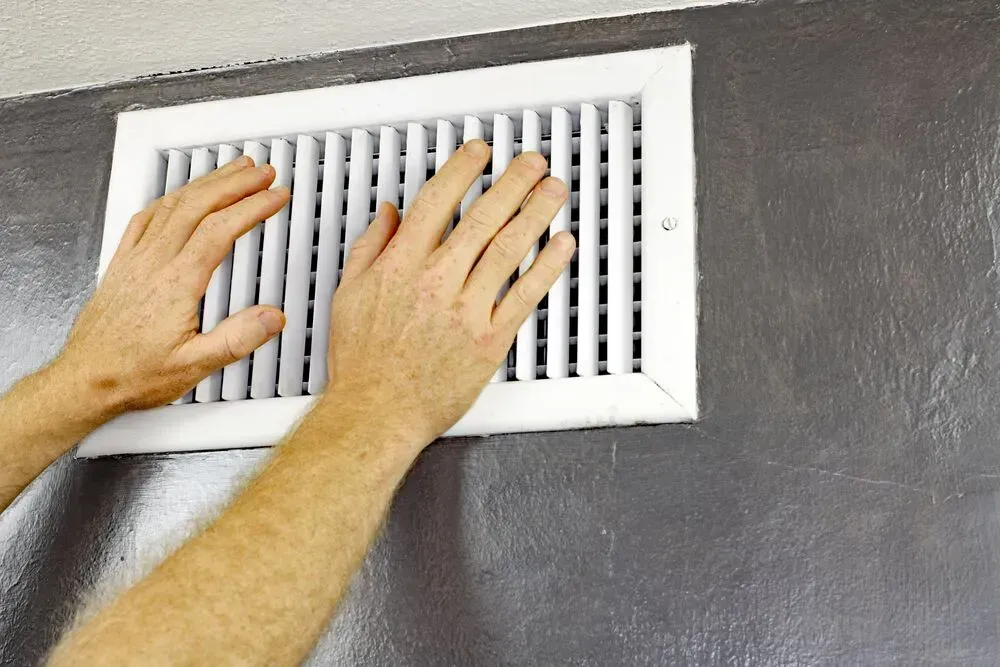
It’s freezing outside, and the last thing you need is your furnace blowing cold air instead of the cozy heat you were promised. If you’re feeling cool air coming from your vents, don’t panic — there’s usually a simple explanation. Let’s walk through the most common causes and get your home warm again, fast. Common Causes of a Heater Blowing Cold Air Your heating system has one job — keep you warm. So why is it suddenly turning into an air conditioner and blowing cold air? Before you start layering up like you’re heading into a snowstorm, let’s troubleshoot. Here are some of the most common reasons your furnace might be staging a cold-weather rebellion. 1. Incorrect Thermostat Settings Sometimes, the solution is as simple as adjusting your thermostat. If the fan is set to “ON” instead of “AUTO,” it will run continuously, even when the furnace isn’t heating. This results in room-temperature air blowing through your vents. Switching the setting to “AUTO” means the fan operates only during the heating cycle, blowing warm air as needed. 2. Dirty Air Filter A dirty air filter can restrict air flow, causing your heating system to overheat and shut down the burners. This safety mechanism prevents damage, but it also means your furnace will start blowing cold air. Regularly replacing or cleaning the air filter can prevent this issue and keep your system running efficiently. 3. Pilot Light Issues For those with older gas furnaces, a pilot light that’s gone out can be the culprit. Without it, the burners can’t ignite, leading to your heater blowing cold air. Relighting the pilot light according to your manufacturer’s instructions can often resolve this. However, if it continues to go out, there might be an issue with the furnace’s heat exchanger, pilot light assembly, or gas supply. 4. Faulty Flame Sensor Modern furnaces use a flame sensor to detect if the burners are lit. A dirty or malfunctioning flame sensor can cause the burners to shut off shortly after ignition, resulting in cool air blowing from your vents. Cleaning or replacing the flame sensor can rectify this issue. 5. Overheating Furnace If your furnace overheats, it will shut down the burners to prevent damage, but the furnace blower will continue to run, pushing out cold air. Overheating can be caused by restricted airflow due to a clogged filter, closed vents, or a failing blower fan. Addressing these issues can prevent overheating and keep your furnace blowing hot air. 6. Gas Supply Issues An inadequate gas supply can prevent your furnace from working properly. This could be due to a closed gas valve, issues with the gas supply pipe, or problems with the gas burner. Check that the gas valve is open and consult with a professional if problems persist. 7. Leaky Air Ducts Leaks or holes in your air ducts can cause the warm air produced by your furnace to escape before reaching your living spaces, resulting in cool air blowing from your vents. Inspecting and sealing any leaks in the ductwork can improve efficiency and comfort. 8. Clogged Condensate Drain Lines High-efficiency furnaces produce condensation that is removed through condensate drain lines. If these lines become clogged, it can trigger safety switches that shut down the burners, causing the furnace to blow cold air. Clearing any blockages in the condensate drain lines can resolve this issue. 9. Cracked Heat Exchanger A cracked heat exchanger is a serious issue that can cause your furnace to blow cold air and potentially release harmful gases into your home. If you suspect the problem is with the heat exchanger, it’s crucial to contact a professional immediately to assess and address the problem. Troubleshooting Steps to Restore Warm Air Before calling in the professionals, there are a few steps you can take to troubleshoot the issue: Check Thermostat Settings: Make sure it’s set to “AUTO” and the desired temperature is higher than the current room temperature. Inspect the Air Filter: If it’s dirty or clogged, replace it to improve airflow. Examine the Pilot Light: If it’s out, follow your furnace’s manual to relight it safely. Open All Vents: Make sure all supply and return vents are open and unobstructed to promote proper airflow. Look for Duct Leaks: If accessible, inspect your ductwork for obvious leaks or disconnections and seal them appropriately. If these steps don’t resolve the issue, it’s time to call in a professional. When to Call a Professional While some issues can be addressed with DIY solutions, others require the expertise of a qualified HVAC technician. If you’ve tried the troubleshooting steps above and your furnace is still blowing cold air, it’s time to schedule a furnace repair in Bucks County with Dilling. Regular maintenance can also prevent many of these issues from occurring in the first place. Keep the Warm Air Flowing with Regular Maintenance Regular maintenance is key to keeping your furnace running efficiently and preventing unexpected issues. Here are some tips to keep your system in good shape: Schedule Annual Tune-Ups: Having a professional inspect and maintain your heating system each year helps catch small issues before they turn into big problems. This includes checking the furnace control board, blower, flame sensor, and gas valve to make sure everything is working properly. Replace Your Air Filter Regularly: A clogged air filter is one of the biggest culprits behind furnace problems. Swapping out the air filter every 1-3 months keeps airflow strong and prevents your heating system from overworking. Inspect Your Ducts for Leaks: Leaky air ducts let heated air escape before it reaches your living spaces. Sealing up duct leaks improves efficiency and helps your home stay warmer. Keep Vents Open and Unobstructed: Closing off too many vents or blocking them with furniture can restrict air flow, causing your furnace blower to overheat or cycle irregularly. Make sure all vents are open and free from obstructions. Don’t Let the Cold Air Win — Call Dilling for Expert Furnace Services! If your electric or gas furnace is blowing cold air and troubleshooting hasn’t solved the problem, it’s time to call in the professionals. At Dilling Heating & Cooling, we’re all about keeping you warm and cozy, no matter how cold it gets outside. Our expert HVAC technicians are trained to diagnose and repair everything from clogged air filters and faulty gas valves to furnace control board malfunctions and pilot light issues. Contact us today to schedule a furnace service in Bucks County, PA and surrounding areas.
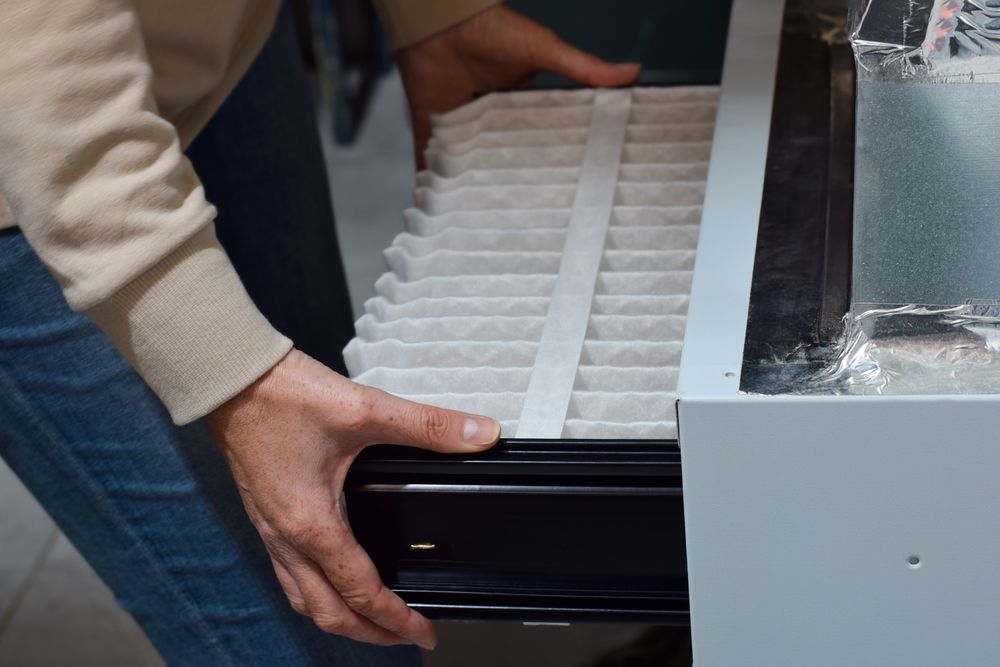
Your heating system has been working overtime, and if it could talk, it would probably be begging for a break. The cold months are brutal on your unit, and without proper care, you might be in for an expensive surprise — like a furnace that quits on the coldest night of the year. The good news? There are simple, practical ways to extend the lifespan of your heater and keep it running efficiently season after season. From swapping out air filters to improving attic insulation, these tips will help your unit run at optimal performance so you stay warm all winter without draining your wallet. Let’s dive into the best way to extend the life of your heater and how small changes can make a big impact on your HVAC system. Schedule Routine Maintenance Just like your car needs regular check-ups, so does your HVAC system. Annual routine maintenance by a professional HVAC company ensures that your unit operates at optimal performance. Technicians can spot potential issues before they become major repairs, saving you time, money, and unexpected chilly nights. Schedule your furnace tune-up in Bucks County and surrounding areas today! Replace Air Filters Regularly Imagine trying to breathe through a clogged mask — tough, right? That’s what your heater experiences with dirty air filters. Replacing filters every 1-3 months promotes better airflow, enhances air quality, and prevents the system from having to work harder, which can lead to overheating and increased wear. Utilize a Programmable Thermostat A programmable thermostat is like a personal assistant for your heating system. It allows you to set the temperature based on your schedule so you can enjoy a consistent temperature when you’re home and conserve energy when you’re not. This not only reduces energy bills but also lessens the strain on your unit, contributing to a longer life expectancy. Check for Proper Insulation Good insulation is your home’s cozy sweater. Proper insulation in walls, attics, and floors helps retain warm air, reducing the workload on your heater. Attic insulation is particularly crucial, as heat rises and can escape through poorly insulated attics, causing your system to work harder to maintain a consistent temperature. Seal Duct Leaks Leaky ducts can be sneaky culprits of heat loss. Duct cleaning and sealing prevent warm air from escaping, keeping your home sufficiently warm. This not only improves energy efficiency but also prevents your heating system from overexerting itself, which can lead to potential major repairs. Keep the Area Around Your Furnace Clear Your furnace needs space to breathe! Keeping the surrounding area free from dust, debris, and obstructions promotes better airflow and reduces fire hazards. A clean environment allows your unit to operate efficiently and safely. Use Ceiling Fans to Distribute Warm Air Ceiling fans aren’t just for summer. Running them clockwise at a low speed during winter circulates warm air that rises to the ceiling back down into the living space. This helps maintain a consistent temperature and reduces the demand on your heating system. Avoid Frequent Temperature Adjustments Constantly changing the temperature setting can cause your heater to cycle on and off more frequently, leading to increased wear and tear. Set your thermostat to a comfortable temperature and try to maintain it to promote optimal performance and extend the lifespan of your unit. Consider Upgrading to a Heat Pump If your heating system is aging, upgrading to a heat pump can be a game-changer. Heat pumps are known for their energy efficiency and can provide both heating and air conditioning, offering year-round comfort while potentially lowering your energy bills. Schedule Professional Furnace Services with Dilling Regular professional check-ups are vital for the longevity of your heating system. At Dilling, our expert technicians are ready to provide top-notch maintenance and repair services to keep your furnace running smoothly. Don’t wait for a breakdown — schedule your routine maintenance with Dilling today and enjoy peace of mind, knowing your home will stay warm and cozy all winter long!
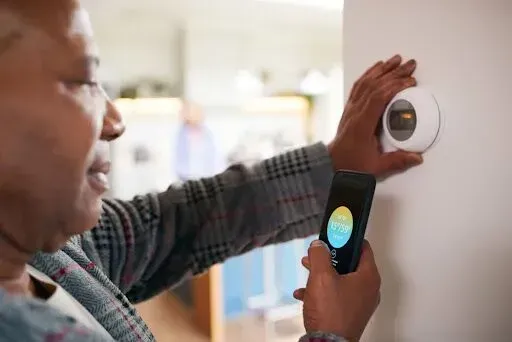
When it comes to making your home cozy and warm during chilly months, understanding furnace AFUE ratings is a game-changer. These ratings not only affect how efficiently your heating system operates but also play a big role in your energy savings. If you’re considering upgrading to a high-efficiency furnace or are simply curious about how your gas furnace stacks up, this guide will give you all the details you need to know. What Are Furnace AFUE Ratings? The term AFUE rating stands for Annual Fuel Utilization Efficiency. It’s a percentage that tells you how effectively your furnace converts energy input (like natural gas) into heat output. A good AFUE rating means more of the fuel is turned into heat, leaving less energy wasted. For example, a furnace with an AFUE rating of 90% uses 90% of the fuel for heating energy, while only 10% escapes as waste. This rating is critical in choosing the right upgrade, especially if you’re deciding between a standard efficiency furnace and a higher AFUE model. It’s like comparing miles per gallon for cars — higher efficiency equals better performance and energy savings. How Furnace AFUE Ratings Impact Energy Bills Want lower heating costs? Understanding how furnace AFUE ratings translate into real-world energy savings can help you keep your home warm without breaking the bank. Higher Efficiency, Lower Costs The higher the AFUE rating, the less fuel your furnace requires to produce heat. That means you get to enjoy lower operating costs and significant savings on your monthly energy bills while maintaining the total annual heat output produced by your heating system. For homeowners using natural gas, upgrading to a high-efficiency furnace can make a noticeable difference in how much you spend to keep your home warm. Standard vs. High Efficiency Furnaces: What’s the Difference? Not all furnaces are created equal. Learn how standard efficiency models stack up against high-efficiency furnaces and decide which one offers the best balance of upfront costs and long-term savings. Standard Efficiency Furnaces These typically have an AFUE rating of 80%, meaning 80% of the fuel converts to heating energy while 20% is lost. They tend to have a lower initial cost, making them more appealing for budget-conscious homeowners. High Efficiency Furnaces A high-efficiency furnace, often rated 90% or above, offers substantial long-term energy savings. These models usually include features like a second heat exchanger, which recaptures heat that would otherwise be wasted. Although they may have a higher initial cost, the reduction in operating costs often pays off over time. How AFUE Ratings Are Calculated To determine an AFUE rating, manufacturers look at the heating process from start to finish. This includes measuring: The energy input (fuel consumed) The heat output (total warmth produced) Any energy lost during operation, such as through the exhaust This calculation helps homeowners understand exactly how much fuel is being turned into usable heat versus wasted. Key Features of High AFUE Furnaces Advanced Heat Exchangers: High-efficiency models often include a second heat exchanger to capture and reuse heat. Sealed Combustion Chambers: These prevent heat loss, boosting heating efficiency. Variable-Speed Blowers: Improve the energy efficiency rating by delivering heat more evenly throughout your home. These features make higher AFUE models a top choice for homeowners looking to maximize comfort and minimize costs. Why AFUE Ratings Matter in New Heating Systems When shopping for a new heating system, paying attention to the AFUE rating helps you balance your initial cost with long-term savings. While a high-efficiency furnace might cost more upfront, the reduced operating costs and higher energy savings make it a wise investment for your home and wallet. Is a High AFUE-Rated Furnace Right for You? If you’re focused on: Lowering utility bills Reducing your carbon footprint from fossil fuel usage Getting better indoor air quality Then, a higher efficiency furnace is a great choice. However, if your budget is tight and you’re not ready for a high-efficiency furnace, a standard efficiency option can still provide reliable heating. Upgrade Your Furnace with Dilling! Ready to upgrade your old heater to a high AFUE-rated furnace? At Dilling, we specialize in helping homeowners choose and install the perfect new heating system in Philadelphia and the surrounding areas — whether that’s a furnace, boiler, or heat pump! Contact us today to schedule your furnace replacement services and start enjoying the benefits of a more energy-efficient home!
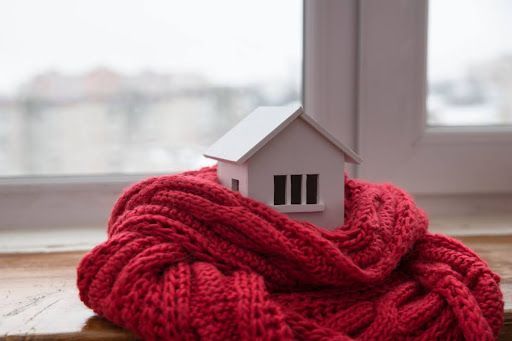
As winter’s chill moves in, your HVAC system will be working overtime to keep your home comfortable. However, if you don’t take the time to prepare it before the cold hits, you risk unexpected breakdowns and increased energy bills. The good news is that getting your unit geared up for cold weather is easier than you might think, especially when you have a trusted team of professionals by your side every step of the way. Dilling HVAC is that partner for homeowners across the Philadelphia region. To help you stay cozy this winter season, we’re laying out the simple steps you can take to fortify your boiler, furnace, or heat pump. Then, when it’s time for a trained eye to confirm each component is up to snuff, call on us for our full range of heating services. No matter if you need timely heating repair, new heating installation, or a simple heating maintenance inspection, we can deliver. A Deeper Look at the Dangers of a Neglected HVAC Unit As the temperature drops and winter tightens its grip, not preparing your heating unit can lead to more than just chilly nights — it can turn your home into a hotbed for costly surprises. Without proper maintenance, your heating system is at risk of breakdowns, reduced efficiency, and even safety hazards like carbon monoxide leaks. Worse still, neglected HVAC systems often harbor hidden wear-and-tear issues that, when left unresolved, can snowball into expensive repairs. Preparing your system isn’t just a preventative step; it’s an investment in comfort, safety, and peace of mind during the coldest months of the year. What You Can Safely Handle On Your Own While some tasks require professional expertise, homeowners like you can take a couple of precautions to sustain the flow of warm air you deserve and mitigate the risk of potentially dangerous and costly consequences. Here are some of the most effective actions you can perform. Inspect and Replace Air Filters A dirty air filter forces your HVAC system to work harder than necessary. A clogged filter reduces airflow and may even allow dust and debris to circulate through your home. Replacing air filters every 1 to 3 months promotes clean, warm air and protects your system from damage. Test Your Thermostat Your thermostat controls your heating system’s efficiency. Testing it early confirms that it responds accurately to your settings. Adjust the thermostat to your desired temperature and monitor how well your furnace or heat pump delivers warm air. If you notice discrepancies, it may be time to upgrade to a programmable or smart thermostat. Keep an Eye on Energy Bills Sudden spikes in your energy bill might indicate that your HVAC unit struggles to maintain optimal performance. Monitoring your energy usage throughout the winter season helps you spot potential issues early, whether it’s a struggling heat pump or a faulty air conditioning system still in cooling mode. Protect Outdoor Components The outdoor unit of your HVAC system needs special care in the colder months. Clearing away leaves, snow, and debris keeps it running smoothly. Consider covering the outdoor unit with a breathable cover to protect it from freezing temperatures and ice buildup. Schedule a Professional HVAC Inspection While DIY maintenance offers substantial benefits, professional inspections before every season transcend basic homeowner capabilities. Trained technicians can identify subtle issues invisible to untrained eyes, preventing potential breakdowns during critical moments. These experts conduct thorough assessments of your entire heating infrastructure, examining electrical connections, mechanical components, and overall system performance. How Our HVAC Experts Can Help You Prepare for Winter When you need expert assistance to prepare your HVAC unit for the winter, our team at Dilling HVAC is here to help. From thorough inspections to critical repairs, we’ll ensure your heating system is in the best shape possible to keep your family snug. Clean and Inspect Ductwork Hidden within your walls, ductwork plays a pivotal role in distributing warm air throughout your home. Our technicians utilize advanced diagnostic tools to identify and address potential blockages, leaks, or inefficiencies that might compromise your heating system. Check and Clear Air Vents and Registers Unobstructed airflow represents the lifeblood of efficient heating distribution. We meticulously examine every vent and register, guaranteeing unrestricted warm air circulation and eliminating potential impediments that could reduce overall system effectiveness. Carry Out Repairs & Replacements Identifying and addressing potential issues before they escalate represents our commitment to your comfort. Our team specializes in precise repairs and strategic component replacements that extend your HVAC unit’s operational lifespan. Measure for Gas & Carbon Monoxide Leaks Safety stands as our paramount concern. We conduct rigorous testing to detect any potential gas or carbon monoxide leaks, protecting your household from potentially dangerous situations that might arise from compromised heating. Make Recommendations for Improvement Every HVAC unit benefits from occasional upgrades. From energy-efficient equipment to programmable thermostats, our team helps you explore options to improve indoor air quality and energy efficiency. Tailored suggestions help you stay comfortable while keeping energy costs low. Call for Additional Winter HVAC Tips Preparing your HVAC system for the winter season doesn’t have to feel overwhelming. Dilling HVAC is ready to provide advice, perform inspections, and complete repairs to keep your home warm and safe all season long. Contact us today for more tips, or schedule an appointment with one of our skilled technicians. Together, we’ll make sure your heating system is ready to tackle whatever winter weather comes your way.

When you ignite your heating system after months of inactivity, it’s not uncommon to notice an unpleasant odor. This can be disconcerting, but often, the cause is benign and easily fixable. Let’s explore the most common smells and what they signify: 1. Burning Dust Accumulation After a long period of disuse, dust settles on your heater’s components, including the heat exchanger and air filters. When you first turn on your heating system, this dust burns off, producing a burning smell. This odor should dissipate within a few hours. Regular maintenance, such as changing clogged air filters, and professional duct cleaning can prevent excessive dust buildup. 2. Musty Smell A musty smell typically indicates mold or mildew has accumulated in your HVAC system or air conditioner. This can happen when moisture collects in the ducts or near the cooling coils. Cleaning your system and keeping it dry can help eliminate these odors. 3. Electrical Burning Smell If you detect an electrical burning smell, it could be a sign of serious electrical issues, such as overheating electrical components or wiring problems. This odor can be caused by an electrical fire within the furnace or heat pump. It’s crucial to turn off your system immediately and contact Dilling HVAC for an emergency heating service in Philadelphia, PA. 4. Chemical Odor Experiencing a sharp, chemical odor could point to a cracked heat exchanger — a serious issue that can lead to carbon monoxide leaks. This situation demands immediate attention from a certified HVAC technician to ensure your safety and the proper functioning of your heating system. 5. Rotten Egg Smell The smell of rotten eggs or sulfur is a strong indicator of a natural gas leak from your gas furnace. This is extremely dangerous and requires that you evacuate the space immediately and contact emergency services before calling HVAC experts to fix the leak. 6. Smells Like Burning Plastic Burning plastic odors could arise from foreign objects that have fallen into the ducts or near heating elements, melting when the system heats up. If the burning plastic smell persists, it’s essential to investigate and remove the debris to prevent potential fires. What You Can Do Here are practical tips and steps you can take to prevent or address these smells: Change Your Air Filters Regularly: Make sure your air filters are clean and clear of debris to prevent dust burns and maintain air quality. Schedule Regular Maintenance: Annual or bi-annual checks by an HVAC professional can help catch and resolve issues like electrical problems, mechanical wear and tear, or a cracked heat exchanger before they become hazardous. Inspect Your Air Ducts: Look for signs of mold, pests, or debris that could cause odors when the heating is on. Install Carbon Monoxide Detectors: Protect against the dangers of carbon monoxide, especially if you have an older gas furnace or any gas appliances. Preparing for the Holidays with Dilling HVAC The holiday season is a time for warmth and comfort, not for worrying about your heating system. At Dilling HVAC, our team of skilled HVAC technicians will make sure your home’s heating is effective and safe. From routine maintenance to more complex furnace repairs, we’ve got you covered. Don’t let a little odor turn into a big problem. Schedule your heating service today and get your home cozy and safe for the holidays. Our commitment to professionalism and personable service means you can trust us to handle your HVAC needs with care and expertise. Remember, the best way to prevent these common heater smells and maintain a comfortable and safe environment is through proactive maintenance and timely repairs. Contact Dilling HVAC to book an appointment, and let us take care of the rest!
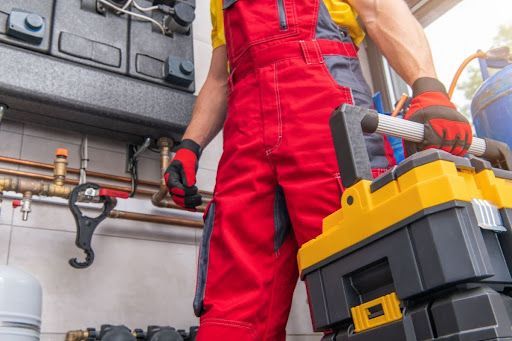
The crisp autumn air signals more than just pumpkin spice season — it’s your perfect reminder to schedule that crucial furnace tune-up before cold weather arrives. A fall maintenance visit keeps your heating efficient, helps spot potential issues early on, and safeguards your system from seasonal strains. Dilling is here to provide a more in-depth look at the benefits of scheduling fall furnace maintenance with our team. Beyond furnace maintenance, we also deliver premier furnace repair and furnace installation services to homeowners across Bucks and Montgomery Counties. Reach out today to book a furnace tune-up and get your home geared up for winter weather. Avoiding Winter Surprises Nobody wants their furnace failing during the coldest night of the year. Our technicians repeatedly see this scenario play out — families huddled under blankets, waiting for emergency repairs in the dead of winter. Being proactive about maintenance helps avoid this dreaded discomfort. Think of it like preparing your car for a long road trip — you’d rather catch potential issues before you’re stranded on the highway. Enhanced Efficiency for Colder Months Ahead A well-maintained furnace can run at peak efficiency, helping homeowners like you avoid the pitfalls of higher energy bills during the winter. When dust and debris build-up within the system, the furnace has to work harder, leading to increased energy use. Fall furnace tune-ups involve a full cleaning of the components and restoring efficient operation, meaning less energy is required to maintain a cozy home. In addition to saving on utility expenses, maintaining efficiency contributes to a comfortable living space without temperature fluctuations. A heating system in pristine condition distributes warm air evenly across all rooms, keeping everyone in the home at ease. The difference in comfort and cost when a furnace is in prime shape can be significant, and a fall tune-up helps you keep that balance just right. Ensuring Safety and Reducing Risks Safety remains a top priority with any heating system, especially during colder months when furnaces run more frequently. Furnaces with gas components, for instance, come with potential hazards like gas leaks from a cracked heat exchanger and carbon monoxide exposure. While these risks are minimal with regular maintenance, an unchecked furnace can pose threats. Fall furnace maintenance allows trained technicians to identify signs of gas leaks or other issues that might affect air quality in the home. Extending the Furnace’s Lifespan Routine maintenance, especially in the fall, can extend the life of a furnace. Regular care reduces the stress on individual components and the furnace as a whole, keeping wear and tear to a minimum. Neglecting a furnace, on the other hand, means it works harder, leading to faster deterioration and earlier replacements. Investing in a fall furnace tune-up helps the system last longer, reducing the need for frequent replacements and costly repairs. Over time, you’ll save money by maximizing the lifespan of your heating system. This annual maintenance adds years to the furnace’s life, making it a worthy addition to any homeowner’s fall checklist. Improving Indoor Air Quality The summer months often leave dust and debris settling in your idle heating system. Once activated, these particles circulate throughout your home, affecting your indoor air quality. Professional fall furnace maintenance includes thorough cleaning of components, helping your family breathe easier through winter. This proves especially important for households with allergies or respiratory concerns. What’s Included in a Fall Furnace Tune-Up? Fall furnace tune-ups come with an in-depth inspection and adjustments that keep your system functioning smoothly throughout the winter heating season. Here’s an overview of what you can expect when you schedule furnace maintenance with Dilling. Inspection and Cleaning One of the first steps in a tune-up involves a thorough inspection and cleaning of key components. Filters, burners, and the blower fan receive attention to remove any dust or debris that could obstruct performance. This step enhances airflow, allowing the furnace to run more effectively and reducing unnecessary wear. System Calibration Calibrating the system means adjusting settings for optimal efficiency. A technician can fine-tune settings such as airflow, ignition, and fuel consumption. By setting these variables to the appropriate levels, the furnace works like a charm, delivering reliable heating without wasting energy. Safety Testing Professional safety testing includes checking for gas leaks, examining electrical connections, and verifying proper ventilation. We test carbon monoxide levels and inspect your heat exchanger for cracks or damage. DIY Maintenance Tips to Keep Your Furnace in Shape While professional maintenance is key, you can take small steps to preserve your furnace between tune-ups. Regularly changing the furnace filter, for example, allows the system to maintain better airflow. Dusting air vents around the home can also contribute to a cleaner system, preventing debris from clogging components. Another thing you can do is check the thermostat occasionally, making sure the settings are accurate. Moreover, upgrading to a programmable thermostat if you haven’t already can save energy by adjusting the temperature based on your schedule. Lastly, keep the area around the furnace clear of clutter. Storing items too close to the furnace can restrict airflow or even pose fire hazards. Clearing the space around your furnace helps it run safely and can make a big difference in performance. Call Now & Get Your Furnace Inspected Before Winter A reliable furnace keeps you warm and safe through the winter, and with Dilling, you get the expertise and support necessary to keep your home comfortable. Don’t wait until the chill of winter; get in touch with us today and enjoy peace of mind knowing your furnace is ready for the season. With Dilling, you’re not just choosing a heating company — you’re choosing a partner in home comfort.
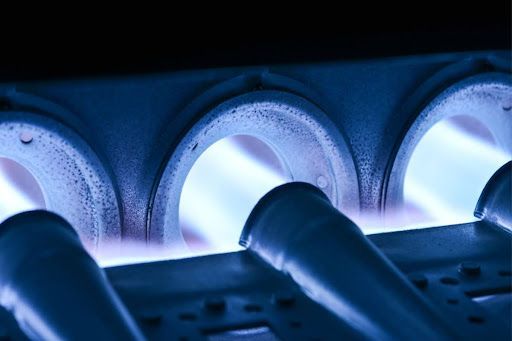
Choosing a furnace that fits your needs, budget, and lifestyle is no small task. Gas and electric furnaces each come with their own set of benefits, and understanding these can help you make a well-informed decision that serves your home and family for years to come. Dilling is here to guide you in what makes each furnace type unique and how to find the one that works best for you. We’re also the ones to turn to when it comes time for the furnace installation in Philadelphia, PA. We can measure your home’s layout, discuss your preferences, go over your budget, and recommend the perfect match. Plus, we offer ongoing furnace maintenance and furnace repair, making us your one-stop shop for home heating. How Do Electric and Gas Furnaces Operate? A gas furnace transforms natural gas into heat through a streamlined combustion process. Powerful burners ignite gas inside a heat exchanger, generating intense thermal energy. Blower motors then propel heated air through ductwork, spreading toasty warmth throughout your living spaces. Known for quick and powerful heating, natural gas furnaces can be highly effective, especially in colder climates. While efficient, they require a gas line and proper ventilation to prevent issues like carbon monoxide buildup. An electric furnace generates heat differently, utilizing electrical resistance technology. Powerful heating elements activate when an electrical current passes through, warming air instantly. Robust fans circulate heated air across rooms, creating uniform temperature distribution. Electric furnaces generally offer a simpler heating process, and because they lack a combustion process, they can be a good option for those seeking a low-maintenance system. Cost Comparison of Each Heating System When considering gas and electric furnaces, cost often plays a significant role in the decision-making process. Understanding the costs associated with each option can give you a clearer picture of what to expect from your investment. Initial Installation Costs Gas furnaces requiring a natural gas line and ventilation tend to have higher installation costs. The complexity of installing these systems can drive up costs, but they often provide robust heating power, making them worth the investment for homes in colder regions. However, if your home already has a gas line, this initial setup might be more straightforward, reducing the overall installation expense. On the other hand, electric furnaces usually have a simpler installation process. Without the need for gas hookups or venting, these furnaces can be installed in almost any home, regardless of existing infrastructure. For those looking for a more straightforward installation, electric furnaces may offer a more appealing upfront cost. Operational Costs Operational costs vary significantly between gas and electric furnaces. Due to fluctuations in natural gas and electricity prices, these costs can shift over time, but generally, gas furnaces tend to be more cost-effective when it comes to heating large spaces. With gas, heat is generated faster, reducing how long the system has to run and, in turn, saving energy over time. Electric furnaces, while often more expensive to operate due to the cost of electricity, can still be a practical choice in regions where winters are milder. Since they convert almost all electricity used into heat, electric furnaces waste little energy, though they may take longer to heat large spaces fully. Efficiency & Performance When choosing a furnace, efficiency often plays a pivotal role, both in terms of cost and performance. Gas furnaces are rated on the Annual Fuel Utilization Efficiency (AFUE) scale, which measures how much of the fuel is converted into heat. Contemporary models often boast a higher AFUE rating, meaning they waste very little fuel, providing warmth efficiently. Electric furnaces shine through near-perfect efficiency ratings, converting almost all electrical input into heat. Zero combustion means no energy loss through exhaust systems. Environmental Impact For many, deciding between an electric or gas furnace often comes down to environmental impact. Gas furnaces produce carbon emissions, which contribute to greenhouse gasses. This has a direct impact on the environment, especially if you’re aiming to reduce your carbon footprint. Electricity’s environmental footprint depends critically on power generation methods. Regions powered by renewable energy sources create compelling arguments for electric heating systems. Maintenance & Lifespan Keeping your heating equipment running smoothly requires maintenance, and the upkeep demands of gas and electric furnaces differ slightly. Gas furnaces involving combustion need regular checks to ensure components like the burner, heat exchanger, and ventilation systems are functioning properly. Over time, parts may wear down, and maintenance tasks like cleaning or replacing the filter become essential to ensure safe and effective operation. Electric furnaces, with fewer moving parts, generally require less upkeep. Their maintenance involves occasional checks and cleaning to keep dust from building up on the heating elements and blower motor. With fewer components subject to wear and tear, electric furnaces often have longer lifespans, potentially lasting 20 to 30 years when maintained adequately. Safety Considerations for Gas vs. Electric Heat When it comes to safety, gas, and electric furnaces, each have unique factors to consider. Gas furnaces involving combustion have the potential to produce carbon monoxide if not properly ventilated or maintained. This is why it’s crucial to install carbon monoxide detectors and keep up with regular maintenance for a gas furnace. Electric furnaces, without combustion, eliminate the risk of carbon monoxide, offering a safer option in that regard. Since there’s no gas or flame involved, electric furnaces reduce the risk of fire hazards associated with gas heat. Why Choose Dilling for Furnace Installation & Service At Dilling, we understand that choosing between a gas or electric furnace is an important decision. Our experienced team is here to provide expert guidance, helping you weigh the options that best suit your home’s unique needs. With a reputation for quality service, Dilling offers installation, maintenance, and repair solutions tailored to deliver comfort and peace of mind. Call Now & Let Us Help You Find the Right Home Furnace If you’re ready to explore the differences between gas and electric furnaces in-depth or need help choosing the right model, call Dilling today. Our team is prepared to provide clear answers, expert advice, and dependable installation for a heating system that meets your goals and your budget. Connect with us and discover the comfort and convenience of a perfectly suited furnace for your home.
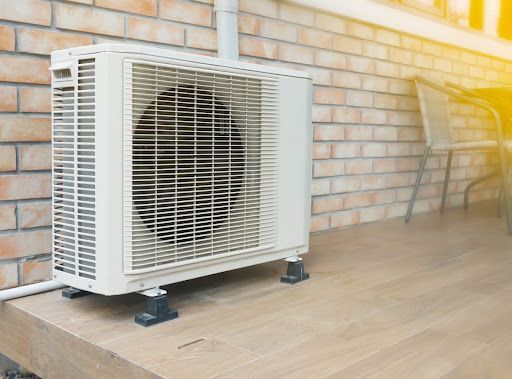
Are you tired of your old HVAC system eating up your energy bills? Good news! Dilling Heating & Cooling has an offer you can’t refuse. We’re buying back your old system — working or not — and giving you a hefty trade-in credit towards a brand-new, high-efficiency HVAC setup. This deal is a win-win: you’ll save money now and for years to come! How Much Can You Save? Let’s break down the numbers. Your trade-in credit depends on the size of your current system: 1.5T – 2 Ton systems: $2,500 trade-in credit 2.5T – 3 Ton systems: $3,000 trade-in credit 3.5T – 4 Ton systems: $3,500 trade-in credit 5 Ton systems: $4,000 trade-in credit That’s a serious chunk of change off your new system! And remember, these credits apply whether your old unit is still chugging along or has given up for a while now. It’s time to turn that old system into cold, hard cash that you deserve. Why Upgrade Your HVAC Now? You might be thinking, “My old system still works, so why bother?” Here’s the scoop: newer HVAC systems are light-years ahead in efficiency. They use less energy to keep you comfy, which means lower utility bills month after month. Plus, modern systems are quieter, more reliable, and often come with smart features that let you control your home’s climate from your phone. By upgrading now, you’re not just getting a new AC or furnace. You’re investing in your home’s comfort and value. New HVAC systems can boost your property value and make your home more attractive to potential buyers if you ever decide to sell. And let’s not forget the peace of mind that comes with a brand-new, warrantied system. No more worrying about breakdowns or costly repairs! The Process: Easy as 1-2-3 We’ve made trading in your old system a breeze. Here’s how it works: Give us a call to schedule your free in-home estimate. Our team will assess your current system and help you choose the perfect new unit for your home. We’ll install your new system and haul away the old one — no muss, no fuss! Everyone qualifies for this amazing deal. Whether you’ve got a tiny apartment or a sprawling mansion, we’ve got a trade-in offer that fits your needs. And with our expert AC installation and heating installation services for NJ and PA residents, you’ll be enjoying your new, efficient HVAC in no time! Out with the Old, In with the New (and Improved) Why stick with an outdated, inefficient HVAC when you can step into the future of home comfort? Our new high-efficiency systems aren’t just about keeping you cool in summer and warm in winter. They add smart technology that adapts to your lifestyle, saving energy when you’re away and ramping up just in time for your return. You’ll feel the difference in comfort and see it in your wallet. Plus, with our solid warranty, you can rest easy knowing your investment is protected. No more worrying about surprise breakdowns or costly repairs because we’ve got you covered. Schedule Your Service With Dilling Today! Ready to cash in on comfort? Don’t wait, as this offer won’t last forever! Schedule your free in-home estimate today and take the first step towards a more comfortable and more cost-effective home. Our friendly team is standing by to answer all your questions and help you make the smart choice for your home and wallet.
